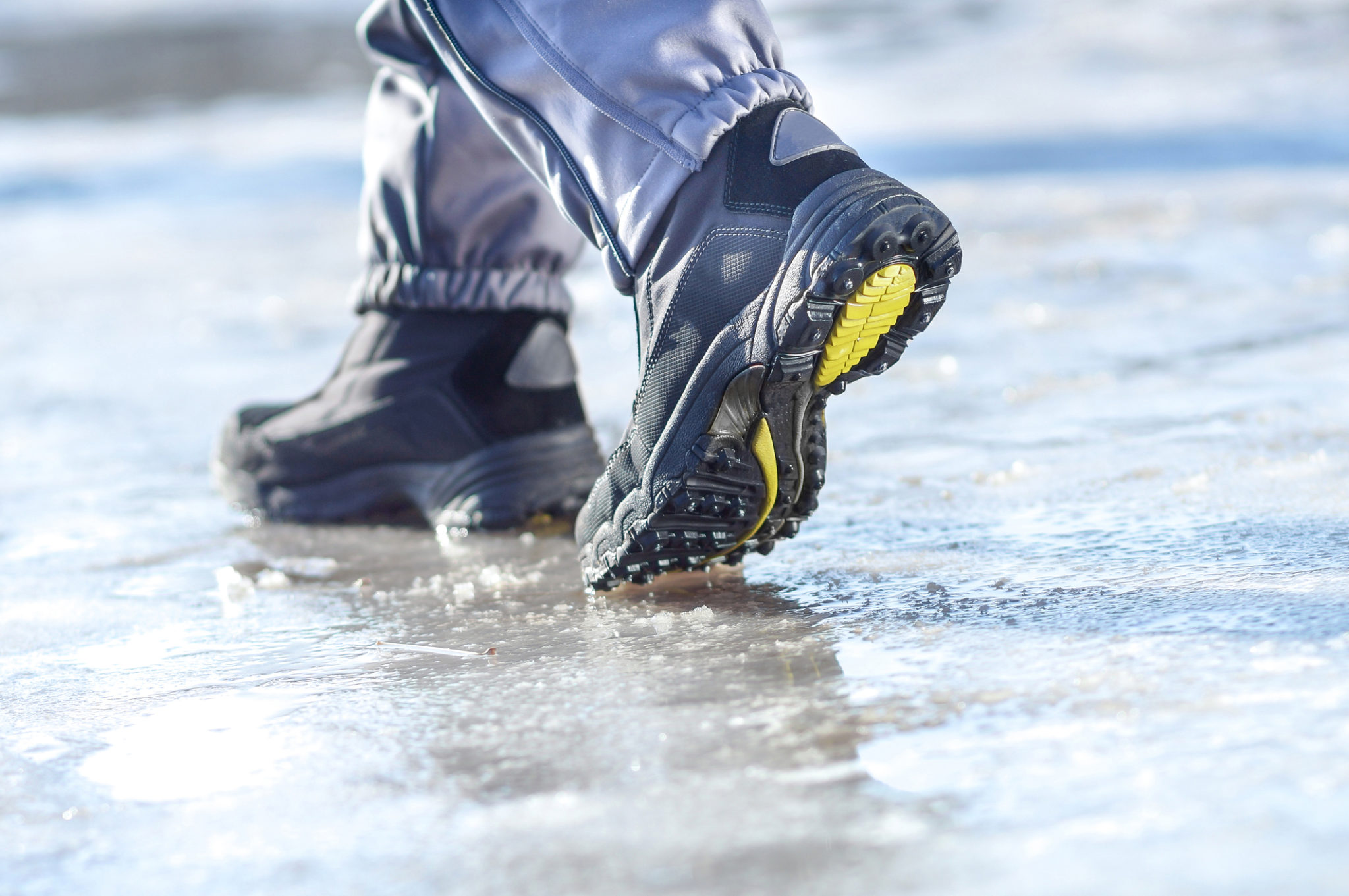How to Avoid Slipping on Ice

September 28, 2021
Slipping while walking on ice is a leading cause of winter injuries that bring people to their doctors, including ankle sprains and fractures of the hip, wrist, and elbow — some of which can be especially serious for older individuals.
We talked with our expert, orthopedic surgeon David Porter, M.D., about steps you can take to reduce your risk of falling during the winter months — including how to take actual steps on the ice.
Precaution #1: Prevent Ice from Forming
The best way to reduce your chance of falling on ice is to prevent it from developing in the first place. Shovel snow from driveways and walkways and put down salt or other ice-melting granules to melt remaining ice and prevent new ice from forming.
Replenish the salt on any areas of your property where snow may melt and then refreeze to form new ice, such as at the bottom of sloped areas.
Precaution #2: Tread Carefully
If you do find yourself having to walk over ice and there is no way around it, think of how penguins walk. Keeping your center of gravity low can help maintain your balance and decrease the chance that your feet will slide out from under you. Studies have shown that walking with a “marching” technique is a safe way to traverse icy areas. Here’s how:
- Use short shuffling strides, lifting each leg from the thigh.
- As you lift your leg, place your foot down flat rather than landing on your heel out in front of you. This will keep your center of gravity under you.
- Keep your hands out of your pockets. They can help you stay balanced.
- Avoid carrying heavy objects or bags over ice.
- Wear proper footwear with good traction on the soles, such as rubber.
- When stepping into or out of your car, look where you are placing your feet and hold onto your car for support.
- Pay attention: look where you are stepping and avoid other tasks, such as talking on a cell phone, while walking.
Precaution #3: Learn How to Fall Safely
If you do slip on the ice, falling while keeping your body rigid increases the chance of injury, such as breaking your wrist while bracing your fall. Try to land on your side or shoulder and keep your body loose, allowing yourself to fall rather than trying to resist it. If you fall on your back, tuck your chin to keep your head from hitting the ground.
A hip fracture in an elderly person can set off a cascade of adverse health events that lead to potential life-threatening complications.
“If you have a neighbor or loved one who is elderly, consider checking in on them to see if they would like some help keeping their driveway or walkway ice-free,” explains Dr. Porter. “With some planning, thought, and practice, you can avoid injuries caused by slipping on the ice.”
The material provided through HealthU is intended to be used as general information only and should not replace the advice of your physician. Always consult your physician for individual care.
Find a doctor near me
Stephanie’s Battle with COVID-19

Stephanie's COVID-19 journey: Read her recovery story & learn how telehealth and testing helped. Find care now.
